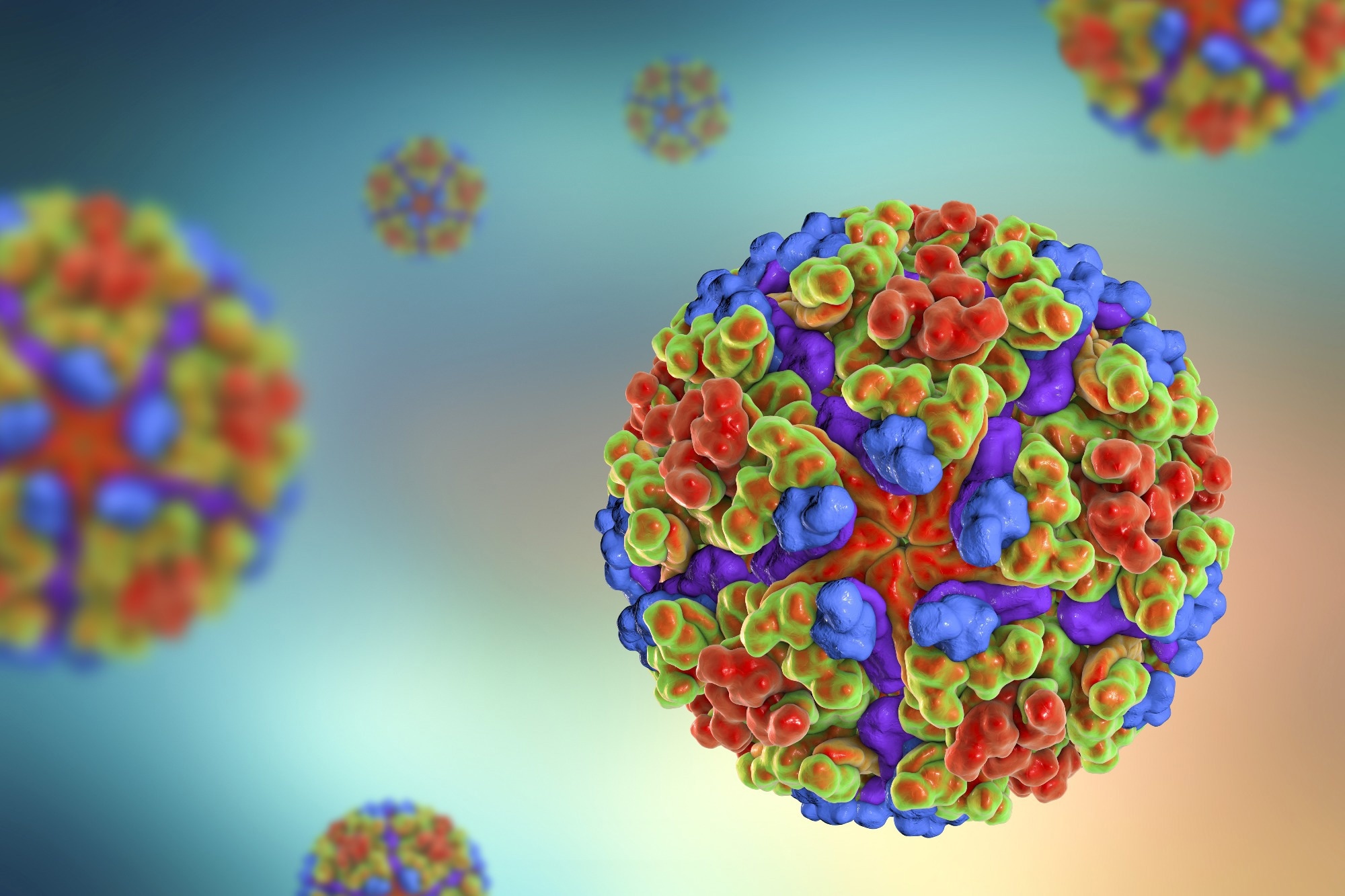In a recent study published in Emerging Infectious Diseases, researchers investigated the potential exposure of peri-urban non-human primates (NHPs) residing near Yangon to arboviruses that have raised health concerns. They also investigated whether NHPs could be potential sources of viral spillover to humans or could be infected by reverse arboviral spillover from humans.
 Study: Sylvatic Transmission of Chikungunya Virus among Nonhuman Primates in Myanmar. Image Credit: Kateryna Kon/Shutterstock
Study: Sylvatic Transmission of Chikungunya Virus among Nonhuman Primates in Myanmar. Image Credit: Kateryna Kon/Shutterstock
Background
Non-human primates (NHPs) living near human residences enhance the risk of sylvatic arbovirus transmission. Myanmar is one of the most densely forested but least studied Asian regions. Studies have reported on the evolutionary origin of the Zika virus (ZIKV), chikungunya virus (CHIKV), Japanese encephalitis virus (JEV), and dengue virus (DENV) among NHPs, which are highly endemic in human beings. Sylvatic transmission of arboviruses among NHPs could be a potential source of viral infection in humans, with significant impacts on public health.
In addition, sylvatic cycles could provide suitable environments for the emergence of novel viral strains; however, data on the sylvatic origin of CHIKV transmission in the Asian continent, especially Myanmar, are limited. Very few human CHIKV cases were documented by the Myanmar Ministry of Health between 2011 and 2018; however, widespread CHIKV outbreaks occurred in Nay Pyi Taw, Mandalay, Yangon, and Kachin State regions of Myanmar in 2019, indicative of CHIKV re-emergence.
About the study
In the present study, researchers investigated the origin of CHIKV transmission among NHPs living in Myanmar and the role of NHPs living in forested areas outside Yangon in CHIKV re-emergence.
Serum samples were obtained from NHPs living in Hlawga National Park, situated near Yangon, Myanmar, between October 2016 and August 2017, spanning two wet/dry seasons. Multiplexed bead-based assays were performed to concomitantly determine total immunoglobulin G (IgG), IgM, and IgA titers against the envelope 1 (E) proteins of CHIKV and ZIKV and NS1 (non-structural protein 1) of ZIKV, DENV, JEV, West Nile virus (WNV), tickborne encephalitis (TBE) virus and yellow fever virus.
Plaque reduction neutralization assays were performed to confirm the findings, and the cutoff values were determined based on the least median value of fluorescence intensity detected by a positive test result. RT-PCR (reverse transcription polymerase chain reaction) analysis with conserved sites of Alphavirus species and Flavivirus species as targets was performed for arbovirus viremia detection.
The number of positive or negative serum samples based on the total Ig titers and period prevalence in rhesus macaques (Macaca mulatta) and pig-tailed macaques (Macaca nemestrina) were determined. Differences in results obtained by sex (male, female), age class (subadult, adult), and season (dry, wet) were analyzed.
Results
Virus-reactive antibody titers were detected among NHPs living in Hlawga national park, indicating prior arbovirus exposure. Still, the viruses could not be detected by RT-PCR, indicative of the absence of any active arbovirus infection. In total, 39 (out of 119, 33%) NHPs and five (out of 119, 4.0%) showed seropositivity for CHIKV and JEV, respectively. All the samples obtained showed seronegativity for WNV, ZIKV, TBE virus, and yellow fever virus.
Dry season samples showed a greater likelihood of CHIKV seropositivity than those obtained during the wet season. A more significant proportion of adult-class NHPs showed CHIKV seropositivity, albeit with no statistical significance. Likewise, age, class, sex, and exposure to a particular arbovirus did not suggest any significant associations. Anti-CHIKV E2 IgG could be detected even after 21 months of infection.
In 2017, anti-CHIKV antibodies were detected in NHPs aged below five years, indicative of an inter-epidemic period exposure. The large population of exposed NHPs indicated active CHIKV circulation among primates and sylvatic mosquitoes in the park. No human CHIKV infections were documented during the study, indicating that viral spillover from humans to NHPs through mosquitoes was not likely.
A. albopictus and Aedes aegypti mosquitoes, key urban-region CHIKV vectors, feed on humans residing in the study region, underpinning sylvatic transmission of CHIKV among NHPs in Myanmar. The findings indicated active JEV circulation in the regions situated in Yangon’s periphery, and that NHPs could be considered probable reservoirs producing low viremia levels that cannot infect mosquitoes.
The finding is strengthened by the fact that Culex species of mosquitoes (especially C. tritaeniorhynchus) that feed on mammals residing in the park region transmit JEV to humans. The study findings indicated that reverse spillover of urban strains of DENV to non-human primates was uncommon in the study region or may not have been detectable in the sample population and that buffer zones between national parks and human residences may decrease cross-species arbovirus transmission in the future.
Conclusions
Overall, the study findings showed that NHPs were exposed to CHIKV during the study period with negligible human–mosquito–human transmission, indicative of sylvatic transmission of CHIKV among the seropositive samples. The study findings extended the geographical range of CHIKV sylvatic cycles to peri-urban and forest regions of Myanmar. However, future studies must be conducted to investigate probable sylvatic cycles of ZIKV among NHPs living in Asian nations.
Additionally, the molecular-level arbovirus epidemiology in NHPs, mosquitoes, and humans needs to be explored to validate the study findings. In addition, awareness of potential CHIKV outbreaks in humans residing near Hlawga national park NHPs needs to be increased. Further, continued surveillance efforts of peri-urban primates living in areas of high arbovirus transmission using lesser invasive techniques for better feasibility are required.